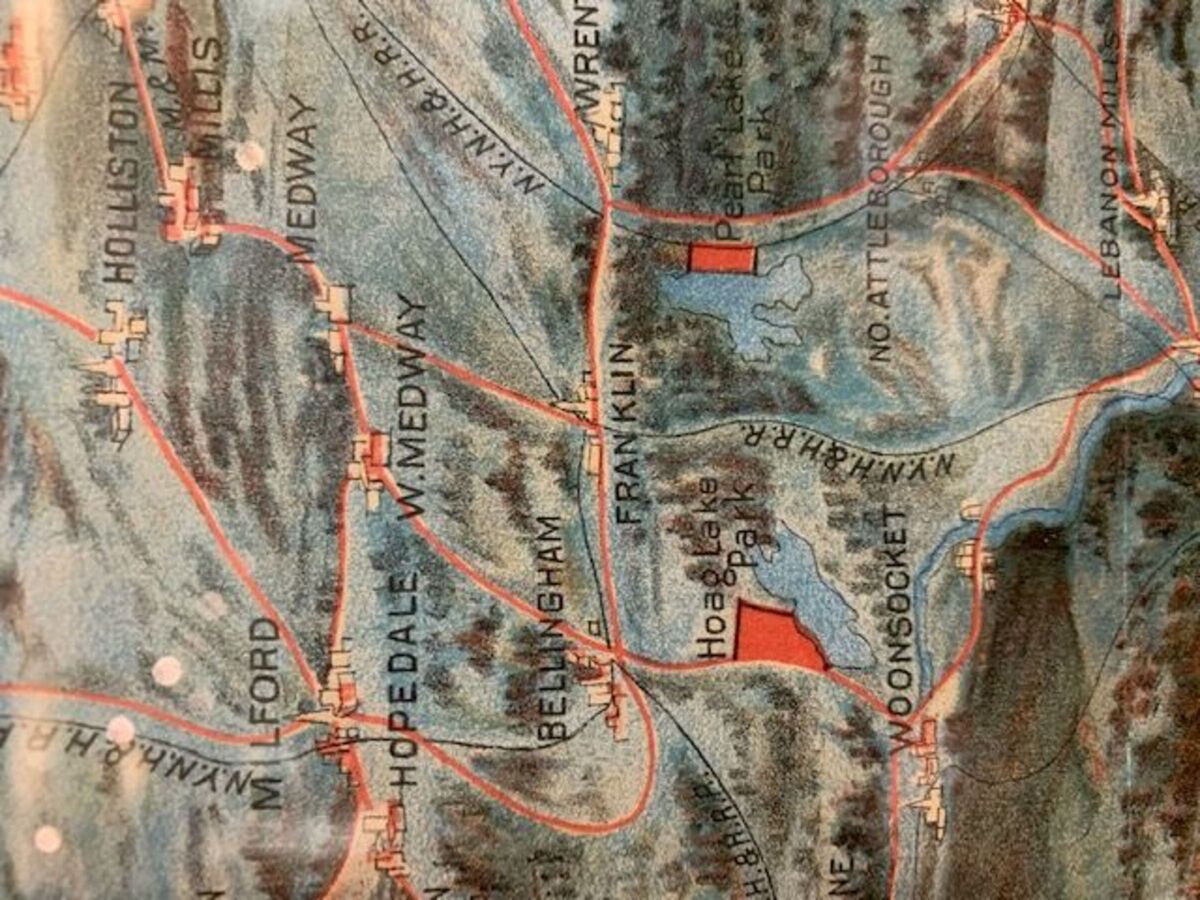Image

The editorialist of the Franklin Sentinel wrote a requiem for the Attleboro, Milford & Woonsocket Street Railway (aka ‘the trolley’) and for a way of life on Thursday, May 7, 1925.
“Workmen are busily engaged in Franklin – and have been for more than a week – in removing the rails over which the trolley cars of the M. A. & W. Street Railway passed through town for about 30 years. The workers found it a man’s size job in breaking up the roadway surface about the rails with pick axes and the progress has been comparatively slow.
“But as the steel disappears, there disappears the final reminder to us all of the passing of the trolley as a mode of conveyance; of the inroads that time is making on our accepted methods of getting about rapidly. Old Dobbin [the general term of yesteryear for any horse] had to yield lots of his prestige to the trolley and now the trolley in this and hundreds of other communities, has been forced onto the scrap pile by the automobile. And Dobbin, incidentally, is forced completely into the background.”
What date marked the last trolley operating in Franklin has, thus far, not been established, perhaps because the demise of the whole remarkable system was a haphazard affair. Economically healthy through the end of World War I, roaring inflation and regulatory obligations to stick with fares agreed years earlier – typically a nickel for a ride – were part of the problem.
Nickeled to Death
That nickel, incidentally, could often take the intrepid passenger halfway across New England by making transfers to cooperating trolley systems serving other communities. E. L. Doctorow, in his 1970s novel, Ragtime, chronicled the protagonist’s long and exhausting but entirely plausible trip from Boston to New York City for just five cents.
The balance of the challenge for street railways like AM&W was the ever-more-popular and ever-more-affordable gasoline-powered motor vehicle, particularly Mr. Ford’s Model T. The “base” model sold for $825 in 1909 and just $500 a decade later, while wages had continued to rise – effectively cutting its price in half.
Local government tried to help. In September of 1919, Franklin Selectmen Geb, Tupper and Cody along with representatives from Caryville (Bellingham), Wrentham, and Milford met and agreed to support an increase of two cents in the fare, though ultimately the change still needed approval by the state Public Utilities Commission.
Troubles came in many forms for the trolleys. In one instance, a driver in Milford knocked over a pole supporting trolley wires, badly injuring his passengers but shutting down the trolleys across the area for a day while repairs were made. In another instance, a severe windstorm knocked over four such poles, landing some of the debris on top of an automobile bringing four Dean students back from a Connecticut athletic event. Service in this instance, was also interrupted.
After one such period of service interruption, the Sentinel reportedly laconically that the AM&W had resumed service to Caryville – location of a mill and mill village – but promptly terminated the service when they discovered that the workers had used the interruption as an excuse to switch to a truck for their transportation needs.
To the Future
Many ways of keep the trolleys going were considered. The Sentinel reported enthusiastically that an inventor in Vienna had developed the ‘trackless trolley’ – a kind of electrified bus (still used by the MBTA) – and also reported on Henry Ford’s plans to install motor-generators in trolleys to free them from their overhead wires.
And in 1924, they noted with approval the fact that the Department of Public Utilities had approved the adoption of conventional busses by the trolley companies as a way to keep some kind of public transportation service going. But it was noisier and smellier and certainly never acquired the level of public affection attendant on the trolley cars of old...
Our Sentinel writer’s ‘requiem’ concluded on an optimistic note:
“What will the next 10 years bring us by way of rapid transportation? Yes, we too believe that the airplane is the answer. And if we are to believe all that is printed in regard to the airplane, it will revolutionize, even to a greater extent than did the modern automobile, our American system of transportation. We hope it will be our privilege to witness this promised and anticipated transition. Don’t you, too?”
* * * * *
Incidentally, a recent Conservation Commission meeting, discussing environmental issues related to a subdivision on the Bellingham border, included lots of puzzlement regarding why or how a railroad right of way ended up in the middle of the fields now being converted to suburban housing. Now you know...